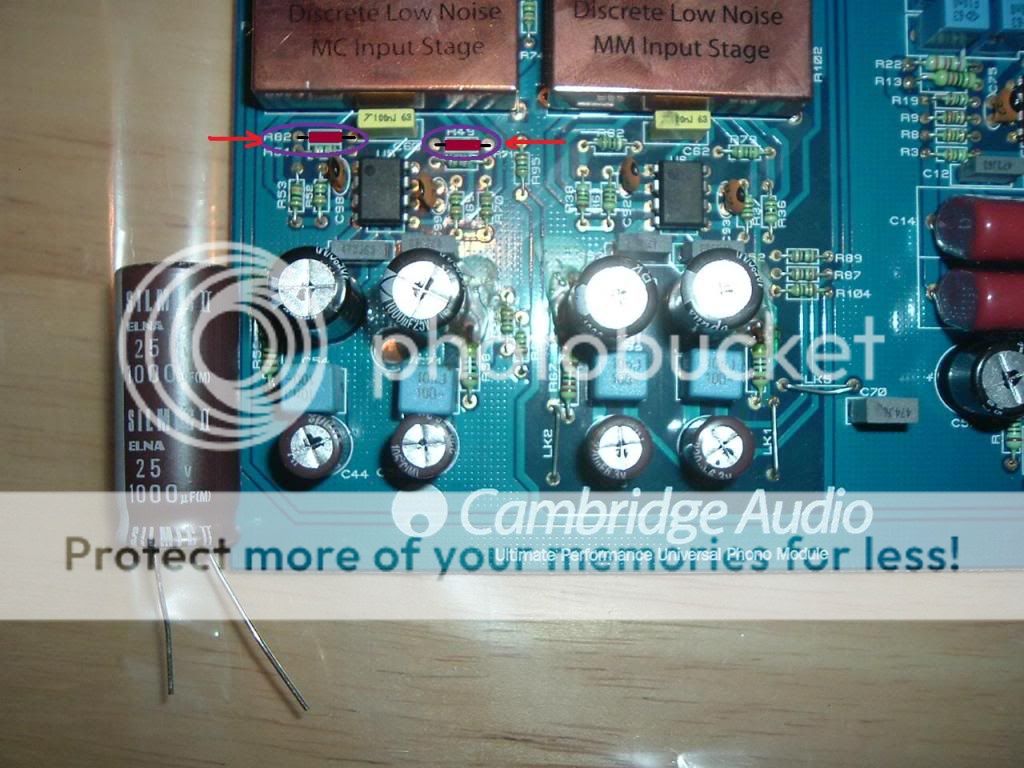I read many posts on vinylengine.com about modding a 640P Phono Preamp that's already a good performer right out of the box. Not being a tech I decided to take the safe approach and just recap it to see if any improvement could be had for a modest investment.
I picked up a nice used unit from a fellow AK'er and this is how it went.
Lead free solder warning, this is not easy to work with, the old lead based solder they used was MUCH easier. It took me up to ten minutes to remove a capacitor because this stuff is like steel, it doesn't melt easily and doesn't run like lead solder.
I used this method to remove the capacitors:
I cut the stubby ends of the legs on the solder side of the board as close as I could to the solder joint. I then used solder wick to remove as much solder as I could, but the holes are so small and the legs are a tight fit, so even the most minuscule film of solder will hold them in. I would then reheat them to gently pull the leg out. On a lot of holes I would have to ream them out so the new legs could fit, a thin film of solder would slightly reduce the hole size making it too tight for the new legs of the new capacitors.
I check each solder joint I make with a magnifier and a resistance meter just to make sure.
Here is the untouched board, notice the brown glue in places, very untidy.
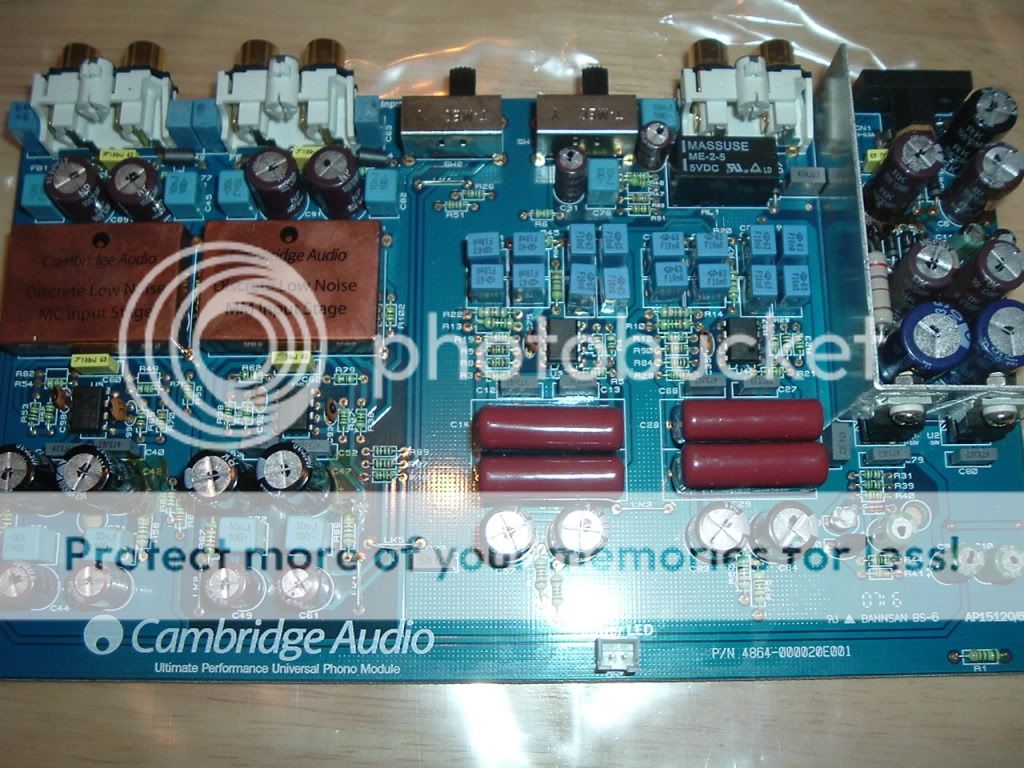
There are 30 electrolytic capacitors all up but I only would replace 24 as I don't own a low output MC cart, I have the 6 replacements on hand, but I wanted to get the MM part done first.
I picked up a nice used unit from a fellow AK'er and this is how it went.
Lead free solder warning, this is not easy to work with, the old lead based solder they used was MUCH easier. It took me up to ten minutes to remove a capacitor because this stuff is like steel, it doesn't melt easily and doesn't run like lead solder.
I used this method to remove the capacitors:
I cut the stubby ends of the legs on the solder side of the board as close as I could to the solder joint. I then used solder wick to remove as much solder as I could, but the holes are so small and the legs are a tight fit, so even the most minuscule film of solder will hold them in. I would then reheat them to gently pull the leg out. On a lot of holes I would have to ream them out so the new legs could fit, a thin film of solder would slightly reduce the hole size making it too tight for the new legs of the new capacitors.
I check each solder joint I make with a magnifier and a resistance meter just to make sure.
Here is the untouched board, notice the brown glue in places, very untidy.

There are 30 electrolytic capacitors all up but I only would replace 24 as I don't own a low output MC cart, I have the 6 replacements on hand, but I wanted to get the MM part done first.


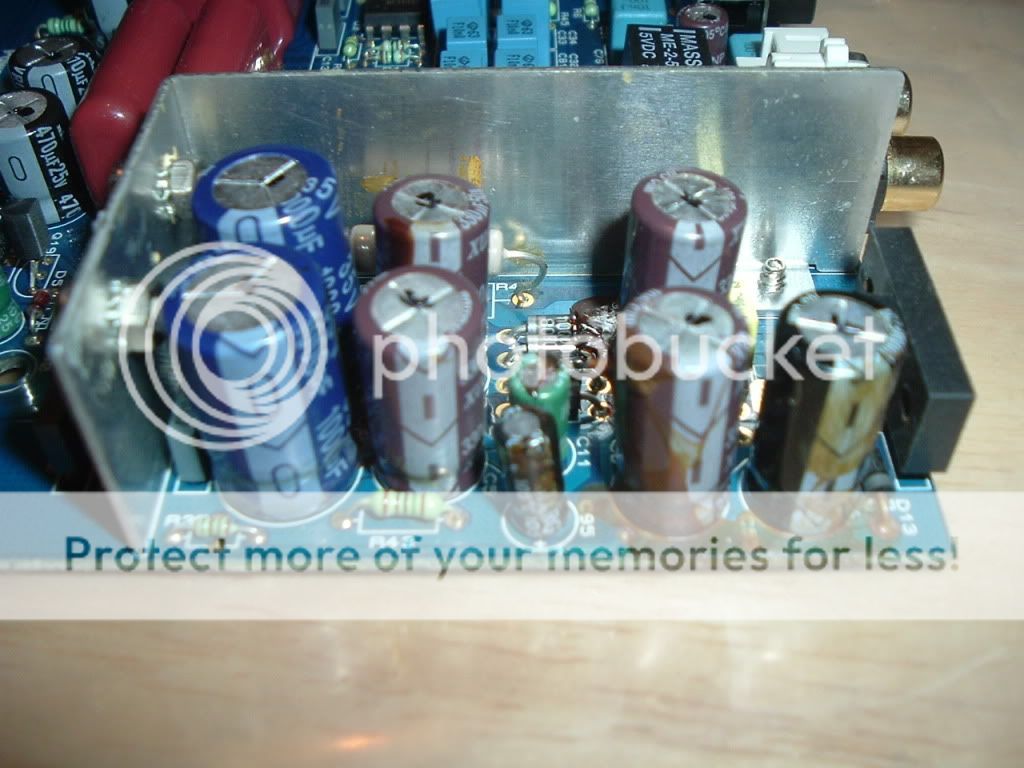
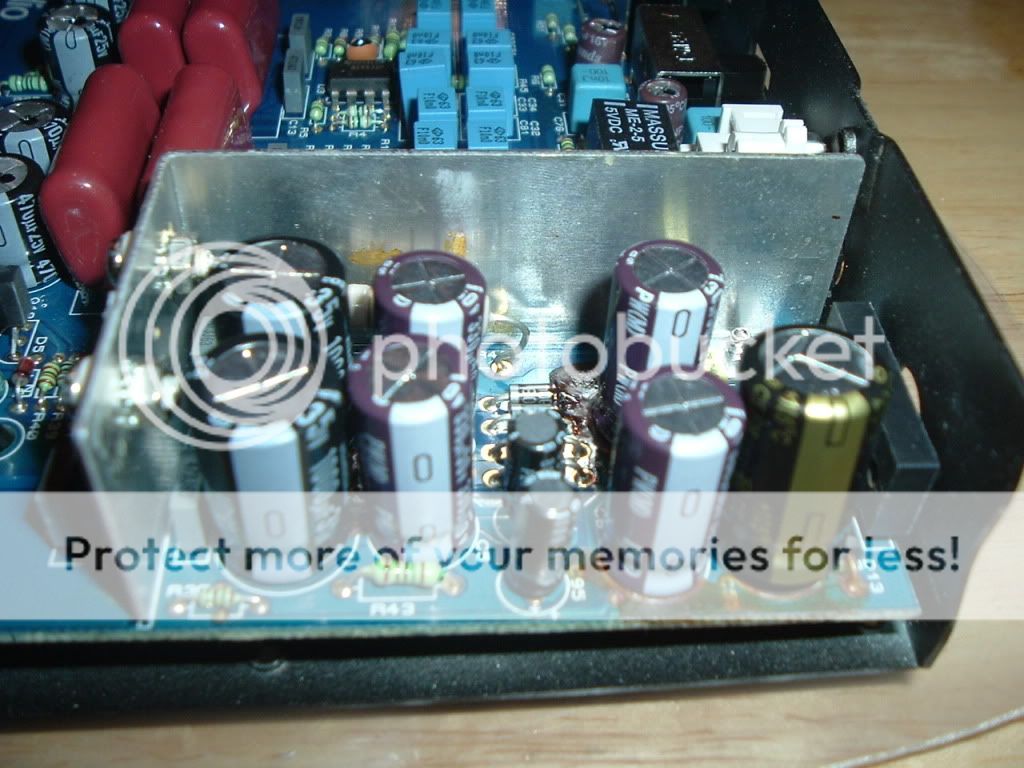
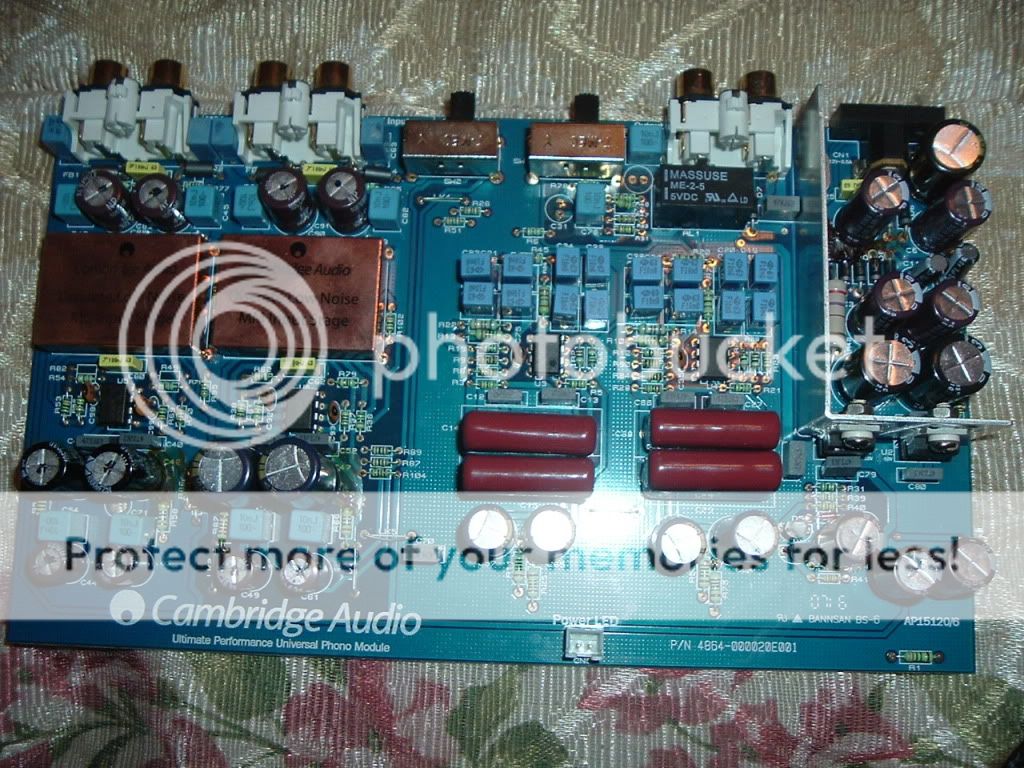


 Also make sure you take note of the orientation of the op amps, the little circular crater must be at the same end as the original otherwise bye bye op amp.
Also make sure you take note of the orientation of the op amps, the little circular crater must be at the same end as the original otherwise bye bye op amp.
